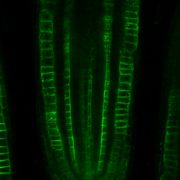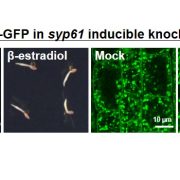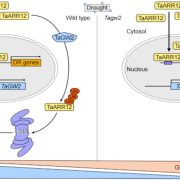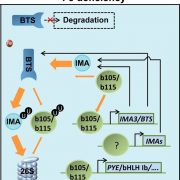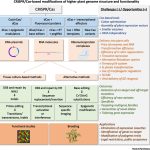A new regulatory module controls chlorophyll catabolism in bananas under high temperature
By Wei Wei, Yingying Yang, Prakash Lakshmanan, Jianfei Kuang, Wangjin Lu, Xuequn Pang, Jianye Chen and Wei Shan
Background: Bananas are harvested at the mature-green stage and transported to wholesale markets, where they ripen to a golden yellow peel with ethylene. Ripening at temperatures above 24 °C (e.g., 30 °C) makes fruits soften faster but its peel remains fully green. This phenomenon is called green ripening, and it is a highly undesirable and loss-making fruit quality condition for banana marketing. The current global warming makes this problem particularly significant. However, the regulatory mechanism underpinning high temperature-induced repression of chlorophyll catabolism and green ripening remains unknown.
Question: What are the crucial genes involved in high temperature-induced green ripening? What are their upstream regulators?
Findings: During the green ripening of banana fruits at 30 °C, expression of five chlorophyll catabolic genes (CCGs), MaNYC1, MaSGR1, MaSGR2, MaPPH and MaTIC55, was significantly reduced. We found that a MYB transcription factor MaMYB60, which targeted and activated the five CCGs, caused chlorophyll degradation in bananas, but its activation was weakened at 30 °C. More importantly, a RING-type E3 ligase MaBAH1 ubiquitinated and targeted it for proteasomal degradation. MaBAH1 thus facilitated MaMYB60 degradation and attenuated MaMYB60-induced trans-activation of CCGs and chlorophyll degradation. Furthermore, the MaBAH1-mediated degradation of MaMYB60 was enhanced under high temperature, which dampened MaMYB60-promoted chlorophyll degradation. Collectively, our findings unravel a new dynamic, temperature-responsive MaBAH1-MaMYB60-CCGs module that regulates chlorophyll catabolism, and the molecular mechanism underpinning green ripening in bananas.
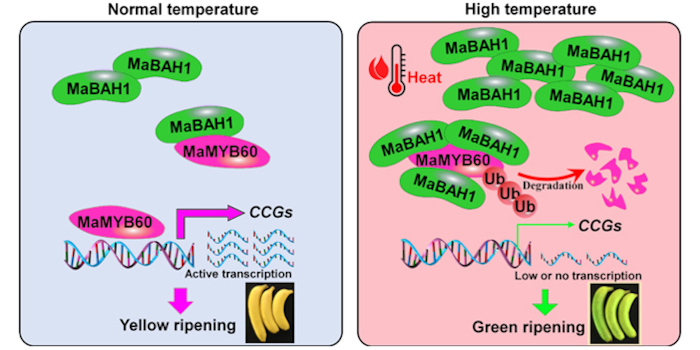
Next steps: We will continue to discover other regulators such as post-translational protein and epigenetic modifiers, which function in modulating chlorophyll catabolism and green ripening under high temperature. These findings will reveal the multilevel regulatory mechanisms behind this phenomenon, and advance our understanding of plant responses to high-temperature stress.
Wei Wei, Ying-ying Yang, Prakash Lakshmanan, Jian-fei Kuang, Wang-jin Lu, Xue-qun Pang, Jian-ye Chen, Wei Shan. (2023). Proteasomal degradation of MaMYB60 mediated by the E3 ligase MaBAH1 causes high temperature-induced repression of chlorophyll catabolism and green ripening in banana https://doi.org/10.1093/plcell/koad030



